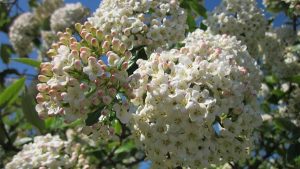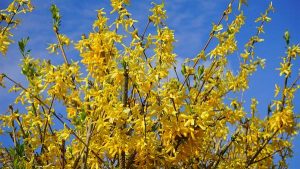When you think of hedges, what do you think of? Tall, natural privacy screens? Mazes? English gardens? There are so many uses for hedges! They can divide your garden into discrete sections. They can replace a fence to border your property. They can be styled into mazes and other interesting features.
If I’m excited about hedges, it’s because I honestly think they’re fascinating. Think about some hedges from pop culture: the maze in Harry Potter and the Goblet of Fire, from Disney’s Alice in Wonderland, or even the huge, frozen one in The Shining. The popular Over the Hedge kids’ movies from the last decade will come to mind for some. And of course, Frances Hodgson Burnett’s Secret Garden, which was surrounded by a “laurel-hedged walk.”
Hedges have an interesting history, too, dating back literally thousands of years to Roman times, where they were used as everything from estate boundaries to the first lines of defense against invasion:
Hedges have been used as field boundaries in England since the times of the Romans. Excavations at Farmoor (Oxon) reveals Roman hedges made of thorn. The Anglo-Saxons also used hedgerows extensively, and many that were used as estate boundaries still exist. Although these early hedges were used as field enclosures or to mark the boundaries of one person’s property, there was no systematic planting of hedges in England until the first enclosure movement of the 13th century.
While England may be the historical home of the hedge, France was also home to some famous hedges, including a labyrinth at Versailles that was actually designed by the author of some of the world’s best-known fairy tales. Austria’s Hapsburg palaces also features hedge mazes, and the gardens at the Vatican display some stunning hedges that frame various plantings. Hedges are used similarly at the famous Mirabelle Gardens in Salzburg, Austria.
Of course, it’s not just palaces and cathedrals that use hedges so artistically. Homes all over the US put hedges to beautiful use, bordering properties, framing other plantings, or guiding visitors along pathways. Across the country, we try to replicate the English garden (like this California vineyard) or come up with unique ways to use these versatile plants.
If you’re thinking about adding hedges to your property, there are a number of types to consider. We’ll walk through some of the most commonly used varieties and share some important points to consider:
- Boxwood – by far the most popular variety, Boxwood is the hedge of choice for mazes and topiaries. This hardy evergreen can grow up to 20 feet tall and can withstand frequent shearing. That makes it easy to keep neat no matter how sculptural you get with your hedge design!
- Ilex – a popular family of hedge that includes holly, ilex is best known for its glossy, dark-green leaves and red berries. Untended, some varieties can grow up to 80 feet, but it’s slower-growing and easy to shape. Its spiky leaves make it a great deterrent for intruders, and many homeowners choose this hedge to plant under low windows. Evergreen ilex is also hardy enough to tolerate cold winters well.
- Privet hedge – dense foliage makes the privet hedge a great choice for privacy. These slow-growing plants are easy to grow and come in a number of varieties. All types bear black berries and then white flowers, but not all privet hedges are evergreen; some varieties will lose their leaves in winter. These sun-loving hedges grow up to 15 feet tall.
- Euonymus – a great alternative to boxwood, euonymus comes in many varieties, but not all are ideal for hedging. These plants are known largely for their eye-popping color, reflected in names like “burning bush” and “golden euonymus.” A less colorful variety known as “green boxwood” is considered great for hedging. Because there are so many kinds of euonymus, height, care and appropriateness for hedging varies greatly.
- Laurel – laurel is a beautiful evergreen that is ideal for hedges. It can be cut back frequently and hard – down to the stump – and it will still grow back. It features dense, glossy leaves, and it can grow in nearly any light and most soil types.
- Yew (taxus) – both slow- and low-growing, yew is another great alternative to traditional boxwood. It’s evergreen and very hardy, but it does require a well-drained soil. Yew can withstand wind, shade and cold, but will not survive a wet winter.
These are just a few options for hedges. There’s a whole range of conifers, and many, many other varieties to consider. Beyond using hedges as tall, property dividers, I hope you’ll consider the broad range of purposes these versatile plants can serve. Have a look on Pinterest and other sites, and allow yourself to be inspired by the magical effects you can achieve when you get creative with hedges!
Interested in learning more? Contact us about caring for your hedges.





